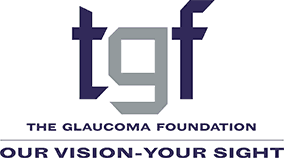At the lab of Dr. Adriana Di Polo at the University of Montreal, researchers are paving the way for the development of therapeutic approaches to protect pericytes and their nanotubes. The goal? Restoring vascular health and vision in glaucoma. In living animals, as in humans, the retina uses the oxygen and nutrients contained in the blood to function properly. This vital exchange takes place through capillaries, the thinnest blood vessels in all organs of the body. Pericytes are small cells that wrap around capillaries.
Author: Andrea Steele
Using Artificial Intelligence to Disentangle Glaucoma Pathogenesis
Please join us on Tuesday, March 15, 2022 at 5pm Eastern Time on Zoom where Dr. Louis Pasquale will talk about how artificial intelligence will impact glaucoma prevention and treatment. Primary open-angle glaucoma (POAG) is a disease subtype defined by chronic, progressive, and irreversible retinal ganglion cell (RGC) loss without clinically evident causes for either elevated intraocular pressure (IOP) or optic nerve degeneration.
Are You Protecting Your Eyes?
~Are You Protecting Your Eyes?~ Winter is not over yet. And it can wreak havoc on your eyes. Fortunately, following a few cold weather eye tips can help keep your eyes safe. Heaters and dry wind can aggravate dry eyes during the winter months. Dry eye syndrome, particularly common among older adults, is mostly caused by a deficiency in the
Do You Have a Problem with Contrast Sensitivity?
~Do You Have a Problem with Contrast Sensitivity?~ You’re not alone. Loss of contrast sensitivity is an extremely common condition associated with aging – and a common problem for people with glaucoma. Contrast sensitivity is what allows us to detect things like different shades of the same color. It refers to the difference in luminance or color that makes an
Doctor, I Have a Question. What are some of the greatest advances in glaucoma treatment?
~Doctor, I Have a Question. What are some of the greatest advances in glaucoma treatment? Question answered by: As physicians, our goal is to preserve vision and quality of life for all our patients. Our populations are ageing and life expectancy is increasing, which means that there will be more people with glaucoma and they will have the disease for
A Song for Glaucoma Awareness Month
~A Song for Glaucoma Awareness Month~ “Sometimes art and music can touch people in a way that other things can’t,” says Donna Mulhollan, who together with her husband Kelly are a folk duo from Arkansas who have been touring the U.S, Canada and Europe for 25 years as Still on the Hill. “I am also an artist of sorts and
The Glaucoma Foundation (TGF) Awards $250,000 Grant for Project Forecasting Glaucoma Progression Using Artificial Intelligence
~The Glaucoma Foundation (TGF) Awards $250,000 Grant for Project Forecasting Glaucoma Progression Using Artificial Intelligence~ Newswise — New York, NY, December 31 --The Glaucoma Foundation (TGF) is signing off 2021 with the largest research grant it has ever awarded. Over the years TGF has funded millions of dollars in smaller seed grants for innovative ideas that have led to
TGF 2021 Year In Review
~TGF 2021 Year In Review~ With support from our generous donors over the past year, TGF funded new research projects and brought scientists together from around the world to chart a course for the future. We produced webinars with patients, advocates, physicians, and scientists for thousands of viewers, partnered with Research to Prevent Blindness to award fellowships in glaucoma, and
The TGF (sponsored by Patricia Hill) – RPB Glaucoma Fellowship Winners Announced
The TGF (Sponsored by Patricia Hill) - RPB Glaucoma Fellowship Winners Announced The TGF (sponsored by Patricia Hill) - RPB Glaucoma Fellowship in Glaucoma is a one-year $10,000 supplemental fellowship targeted to under-represented racial and ethnic minorities, as defined by the NIH, who are fellows in Departments of Ophthalmology engaged in substantive glaucoma research. TGF/RPB awarded these fellowships in December
Why is Dry Eye So Prevalent?
Why is Dry Eye So Prevalent? Question answered by: Gregory K. Harmon, MD Chairman, The Glaucoma Foundation Associate Professor of Ophthalmology, Weill Medical College of Cornell University/New York Presbyterian Hospital Dry eye disease is a common eye disorder in which the eyes don’t make enough tears, or the tears evaporate too quickly. It can make your eyes feel dry,

